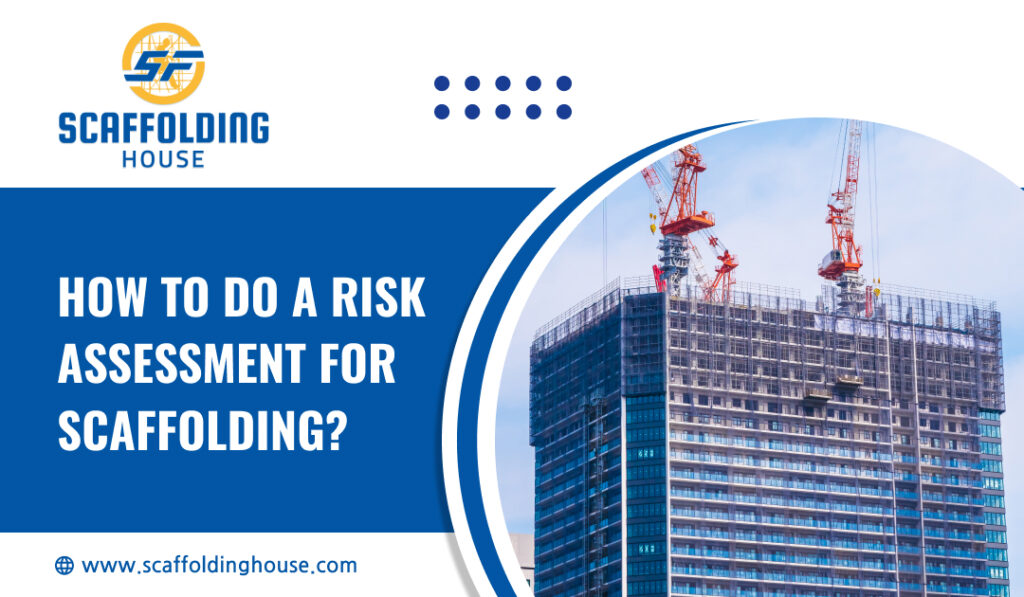Working at heights comes with numerous risks that need planning to ensure safety. When working at heights, it’s essential to know and reduce the possible risk factors. This involves conducting a risk assessment to address and document the possible risks on the site and following safety measures to minimize their impact. This will ensure that you follow precautions to meet legal requirements to keep your team safe. The steps you need to follow depend on your local regulations. In this blog post, we’ll discuss the steps to take to assess the risk of scaffolding.
What is Risk Assessment in Scaffolding?
The risk assessment helps you to address and examine potential risks in your workplace before you start the project. Working procedures and conditions during the assembly, use and disassembly of scaffolding are systematically documented and evaluated.
Depending on the risk assessment, you can decide on measures to prevent injuries and accidents and create a safe working environment. Crucial emergency procedures also depend on the risk assessment. Every scaffolding equipment should be inspected, from the scaffolding base jack, wing nuts, and cuplock to top cups and mobile towers. In short, the objectives of risk assessment include:
- Identifying health and safety hazards while evaluating the risks associated with scaffolding work.
- It also involves assessing the effectiveness and suitability of existing control measures.
- And ensure the implementation of additional controls (including procedural ones) whenever the remaining risk exceeds low levels.
So, the whole purpose of risk assessment is to manage risks, enabling us to perform work safely. Initially, efforts focus on removing risks by eliminating hazards. In many cases, controlling the hazards becomes crucial to mitigate the risks.
5 Steps to Follow to Do Risk Assessment for Scaffolding
You must be aware of potential hazards at construction sites. Once you are aware of these risks, you need to follow some safety tips to ensure that those risks are reduced.
- Identify work areas and responsibilities
To properly identify potential risks in your work area, the first step of risk assessment is to determine the work areas. While doing so, you must pay attention to operating conditions.
Identify potential risks
During risk assessment, you must identify the potential hazards. These risks can be divided into:
- workplace-related risks
- activity-related risks, and
- person-related risks.
Every workplace comes with its own specific risks. Here are the main causes of workplace-related hazards:
- lighting and environmental conditions
- height of the scaffold, which can contribute to possible injuries due to falls
- risks of high-voltage power lines near the scaffold
Certain equipment, but also monotonous movements can lead to activity-related risks. The latter is also associated with the person-related risks that can be due to mental or phsical overload. The risk assessment also address who is impacted by these risks.
- Assess the hazards
After identifying potential hazards, it’s time to evaluate them. This includes examining the possible risks they have and their severity. This will create the foundation for the next steps of the risk assessment, in which you decide how you can eliminate or reduce them.
- Follow protective measures
Adhering to safety measures and rules, maintenance of your scaffolding, regular inspection, and safety training for your workers are essential precautions you need to take to minimize the hazards of working on the scaffold. Further, protective measures you can take include safety equipment and PPE.
- Check scaffolding equipment
During the assembly or disassembly of scaffolding equipment like a rapid clamp, base jack, wing nut, etc., you need to check each equipment for its effectiveness. Regular checks ensure that safety measures remain effective and help you identify new risks that arise during the project. Therefore, to ensure safety throughout the construction project, ensure each scaffolding equipment is checked regularly.
Conclusion
By following these risk assessment steps, you can safely assemble and dismantle scaffolding systems to maintain the occupational health and safety of your workers. To ensure safety and high-quality scaffolds, you can choose scaffolds from Scaffolding House. We are a trusted scaffolding manufacturer and supplier, renowned for manufacturing scaffolds using the best quality material to ensure durability.

